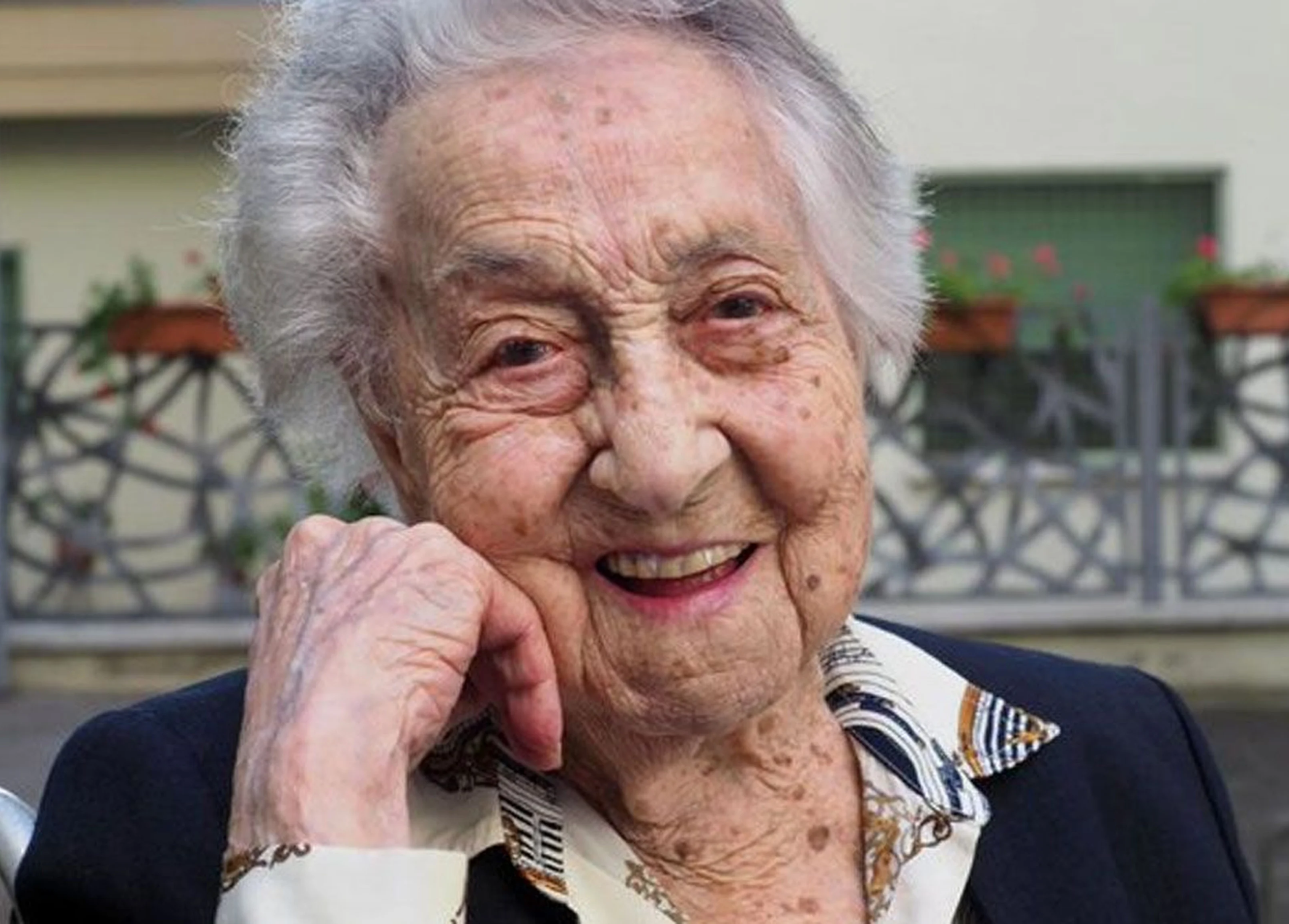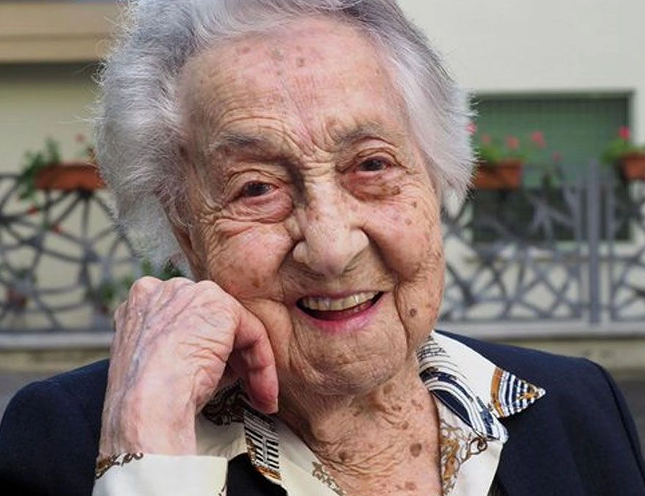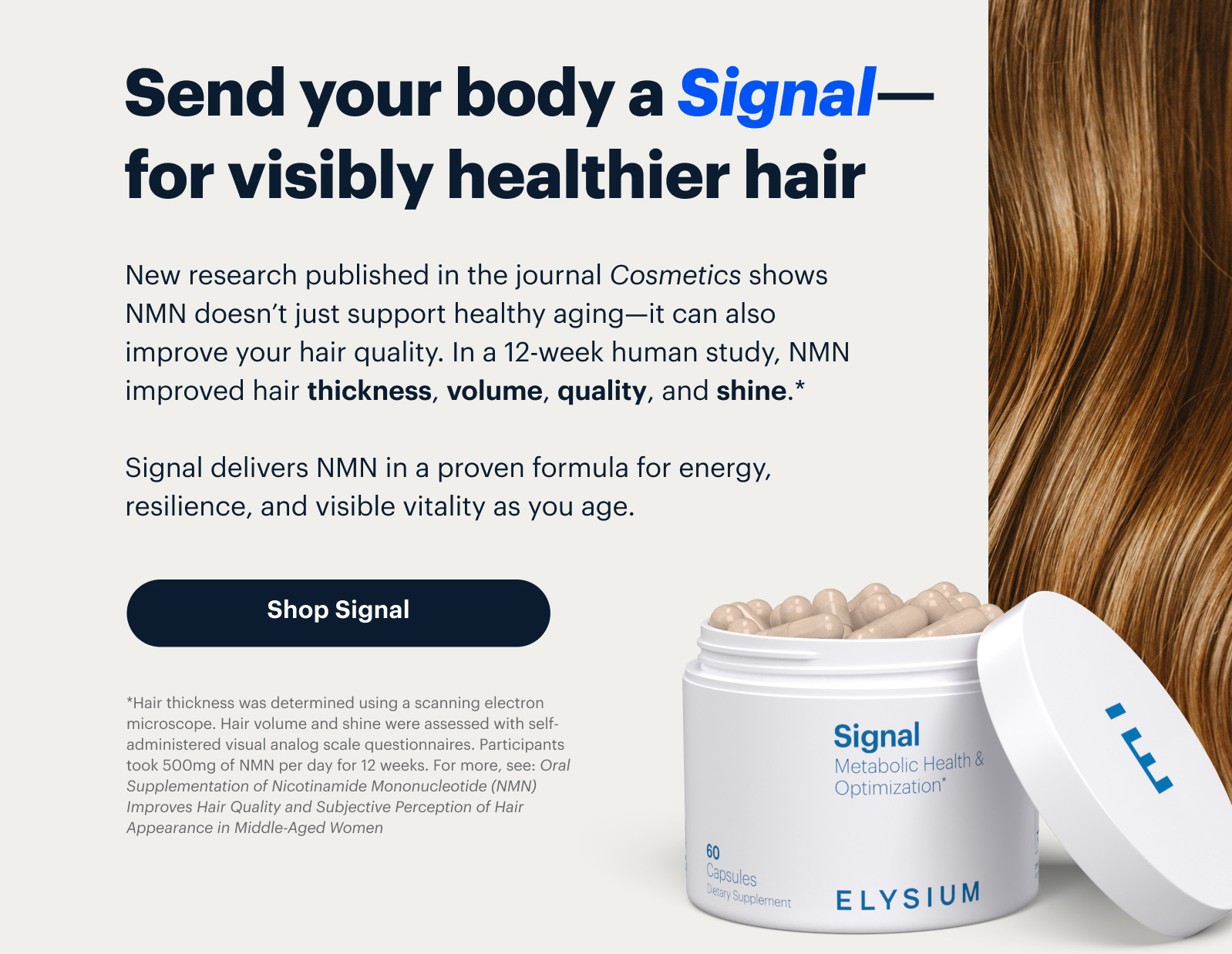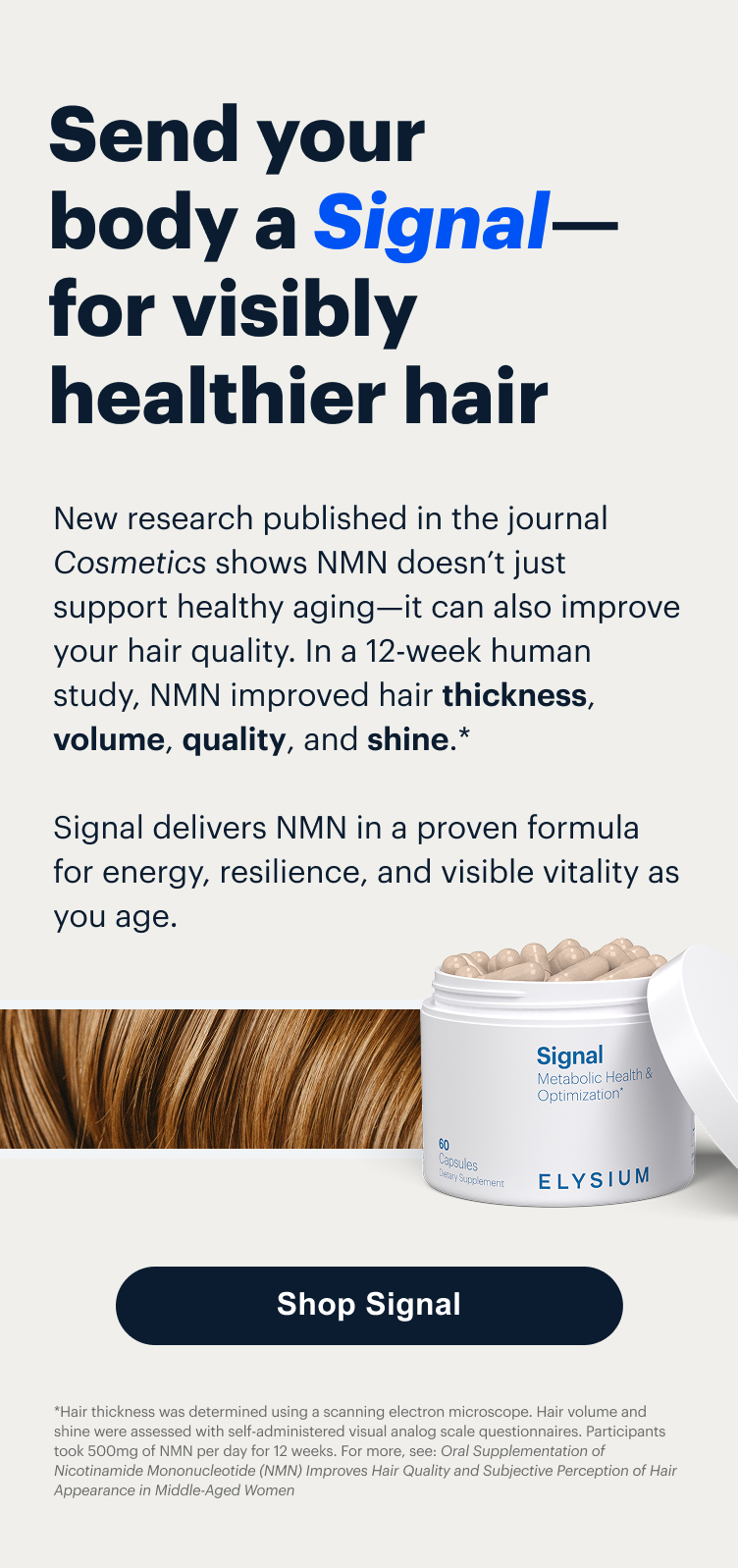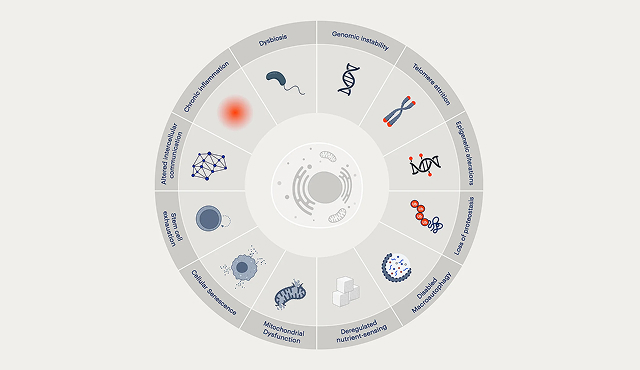| Thanks for reading The Abstract. This month’s edition is
1,230 words, about a
4-minute read.
|
|
Is there a topic that you’d like to see more of in
The Abstract? Drop us a line at
abstract@elysiumhealth.com. Want to get
The Abstract in your inbox? Sign up
here.
|
|

|
|
|
|
This month’s edition of
The Abstract explores the biology of longevity—from the cellular signatures of a 116-year-old to new research on nicotinamide,
NMN, cocoa flavanols, and social connections. The studies highlight how metabolism and inflammation converge to shape healthspan—and how everyday choices, from diet to supplementation, can influence your longevity.
|
|
|
What the world’s oldest person can teach us about longevity
|
|
|
|
|
Maria Branyas, an American-born Spaniard considered the world’s oldest person at 117 years old. Photo: Handout
|
|
A Cell Reports Medicine case study used multi-omics (genome, transcriptome, metabolome, proteome, microbiome, epigenome) to profile the world’s oldest person at the time of the study. The indexed individual was the 8th longest-living person in history on verified records, and passed away on August 19, 2024 at the age of 117 years, 5 months, and 18 days. (She was 116 at the time samples were collected for analysis.) Alongside classic
hallmarks of aging—very short telomeres, clonal hematopoiesis, and “aged” B cells—she carried multiple protective genetic variants, had low systemic inflammation (low GlycA/GlycB), exceptional lipid handling (very low VLDL/triglycerides, high HDL, and more large HDL/LDL particles), and a Bifidobacterium-rich gut linked to her yogurt-heavy Mediterranean diet. Across several
biological clocks, her biological age measured roughly 23 years younger than her chronological age.
|
|
The data suggest that extreme longevity can arise when genetic advantages, anti-inflammatory metabolism, youthful epigenetic patterns, and a supportive microbiome align. That points to practical targets—inflammation, lipid metabolism, mitochondrial health, and the gut ecosystem—as levers to shift aging biology toward better healthspan.
|
|
The Expert’s Take:
|
|
“Santos-Pujol provides an in- depth characterization of a 116-year-old, who was the world's oldest person at the time of her death. They analyzed her genome, epigenome, transcriptome, metabolome, proteome, and microbiome. The paper is full of interesting observations from the detailed analysis but, as pointed out in the paper, "drawing broadly applicable conclusions from a single subject should be taken with caution." Results could be idiosyncratic, driven by chance, subject to confirmation bias (e.g., cherry-picking findings that support existing hypotheses), or biologically irrelevant to longevity.
|
|
Two observations stand out. First, they looked at the patterns of DNA methylation of the supercentenarian using an epigenetic clock, similar to Elysium's
Index. They found that the pattern of DNA methylation was much younger than her chronological age. They speculate that youthful DNA methylation may have played a role in her exceptional longevity.
|
|
Second, they observed that the supercentenarian exhibited very short telomeres. This is significant because it goes against the prevailing theory that telomeres are a hallmark of aging. Short telomeres are thought to limit cellular lifespan by limiting cellular replication. But the length of telomeres in an average 80-year-old is much longer than in this healthy supercentenarian. Thus, one wonders whether short telomeres in 80-year-olds are functionally limiting.”
|
Stuart Kim, Ph.D.
Professor Emeritus of Developmental Biology and Genetics at Stanford University School of Medicine, and Elysium Scientific Advisory Board member
|
|
|
|
|
THIS MONTH
|
|
What We’re Reading
|
|
These are third-party articles about science that we find interesting but have no relationship to Elysium or any of our products. Elysium’s products are not intended to screen, diagnose, treat, cure, or prevent any disease.
|
|
NMN boosts hair growth and quality after 12 weeks
|
|
In a single-arm 12-week trial of 15 healthy Japanese women (ages 40–50), supplementation with oral
nicotinamide mononucleotide (500mg NMN daily)—a potent NAD+ precursor—was found to measurably improve hair metrics and subjective hair quality. Anagen (early growth phase) hair density improved as did the hair shaft diameter. Electron microscopy imaging showed better cuticle structure, and patient questionnaires reported gains in gloss, elasticity, volume, and reduced fatigue/hair shedding. Metabolomic shifts in energy and amino acid pathways were also noted. This is the first human trial linking NMN to hair improvements. The lack of a control arm somewhat limits this study but the findings are very promising. (Cosmetics)
|
|
|
|
Cocoa compounds may curb “inflammaging” and protect the heart
Building on the COSMOS trial, researchers published new biomarker data showing that daily cocoa extract supplements lowered high-sensitivity C-reactive protein (a key inflammation marker) by ~8.4% per year compared to placebo. The findings suggest that the cardiovascular benefits seen in prior cocoa studies, including a 27% reduction in cardiovascular mortality, may be mediated in part through reduced systemic inflammation. The effect is attributed to flavanols naturally present in cocoa. Unfortunately, most chocolate products are ultra-processed and calorie-dense, so the benefits are best obtained from high-quality dark chocolate or dedicated flavanol supplements consumed in moderation. (Age and Ageing)
|
Lifelong social connections linked to slower aging
“People with richer, more sustained social connections literally age more slowly at the cellular level,” according to Cornell University’s Anthony Ong, Ph.D. In a study of over 2,100 adults from the MIDUS cohort, Ong’s team found that those with deeper, more consistent ties—spanning childhood warmth, community connection, and emotional support—showed slower biological aging. Using DNA methylation–based “epigenetic clocks” (GrimAge and DunedinPACE), participants with greater “cumulative social advantage” displayed younger biological profiles and lower inflammation, including reduced interleukin-6 levels. The findings suggest that lasting social bonds may directly influence longevity. (Brain, Behavior, and Immunity – Health)
|
Nicotinamide linked to lower skin cancer risk
A large Veterans Affairs retrospective cohort study published in JAMA Dermatology found that nicotinamide—a less efficient
NAD+ precursor compared to NR and NMN—was associated with fewer new skin cancers among more than 33,000 U.S. veterans. Patients taking 500 mg twice daily had reduced rates of basal cell carcinoma, squamous cell carcinoma, and melanoma compared with matched controls. Overall skin cancer risk fell by 14%. The effect was even greater—up to a 54% reduction—when started after the first skin cancer diagnosis, but the benefit diminished when treatment began following additional skin cancers. The findings build on earlier small trials, suggesting nicotinamide may help lower skin cancer risk by improving DNA repair and reducing UV-induced immunosuppression. Importantly, the benefit was observed outside of a trial setting, in a real-world, high-risk population. While the study was retrospective and mostly in older White men, the results strengthen the case for nicotinamide as a safe, low-cost preventive strategy for skin cancer. (JAMA Dermatology)
|
|
|
|
|
|
TERM OF THE MONTH
|
|
Nicotinamide mononucleotide
|
|
/ˌnɪkətɪnəˌmaɪd ˌmɑnoʊˈnuːkliəˌtaɪd/
|
|
|
Nicotinamide mononucleotide (NMN) is a naturally occurring molecule that serves as a direct precursor to nicotinamide adenine dinucleotide (NAD+)—a coenzyme essential for cellular energy production, DNA maintenance, and overall metabolic function. By replenishing NAD+ levels, NMN helps support mitochondrial health and counteracts the age-related decline in cellular energy and metabolic health. NMN is the main ingredient in
Signal.
|
|
|
|
|
|
|
AGING 101
|
|
What are the hallmarks of aging?
|
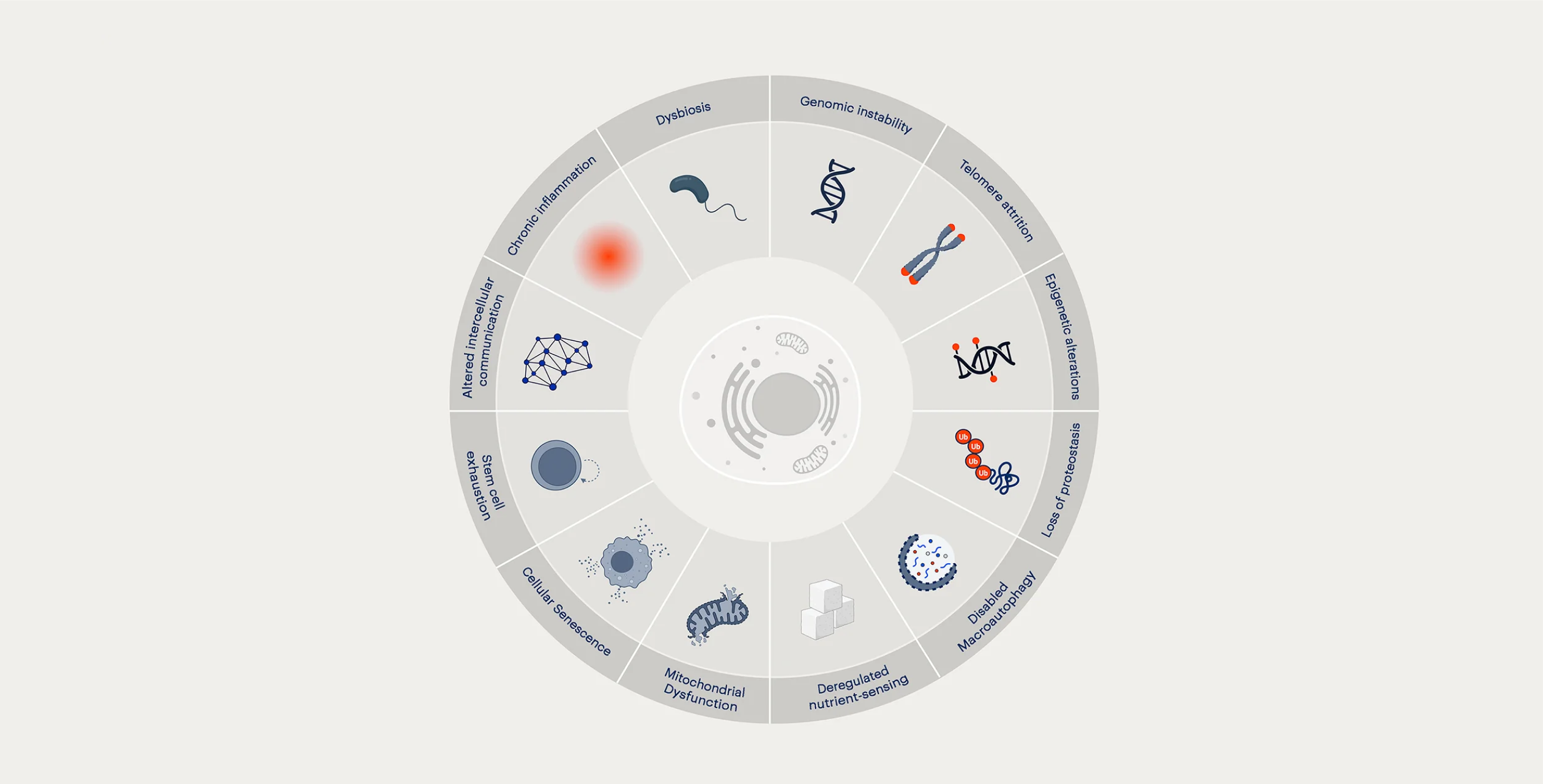
|
|
|
|
The hallmarks of aging represent 12 interconnected cellular processes that drive aging—ranging from genomic instability to age-related inflammation. In this article, we break down each hallmark and explore how science-backed ingredients like the NAD+ precursors in
Basis and
Signal target these hallmarks. (Read more)
|
|
|
|

